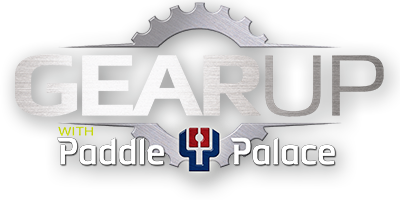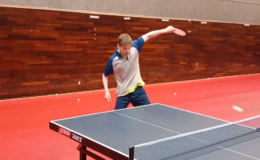By Larry Hodges, USATT Hall of Famer and National Coach
What is a chop block? It is a block with backspin. Since long pips and (usually) hardbat automatically returns topspin as backspin, it is the norm for those surfaces. But with inverted (as well short pips to a lesser degree), a topspin ball is normally catapulted back with some topspin.
But what if the inverted blocker were to chop down on the ball at contact, thereby returning the incoming topspin as backspin? That is a chop block, and it can cause havoc with an opponent’s timing.
Many players thrive in fast topspin rallies, using your own fast topspin balls to loop, counter-hit, or block back everything aggressively. A sudden chop block against a topspin ball can completely throw off their timing. Instead of a fast ball jumping out into their hitting zone, the ball dies in front of them, and there’s no topspin for them to counter against. The shot is especially effective against loopers who back up from the table a lot, since they are often uncomfortable looping closer to the table, and this brings them out of their comfort zone.
To do a chop block, simply chop down lightly as you block the incoming topspin (usually against a loop), holding the racket loosely. Your shot should go out low and soft, almost like a push. Place the ball to the corners to force the opponent to use his weaker (or more awkward against a soft ball) stroke, or to the middle to cut off angles. The shot is usually done on the backhand side, but can be done on the forehand as well. (One reason most chop blocks are done on the backhand is it is assumed you can do more effective counter-attacks on the forehand, but that’s mostly true at the higher levels.)
A variation is to sidespin block, where the racket moves sideways (or sideways and down) to create a sidespin or sidespin-backspin block. This is usually done on the backhand, with the racket moving right to left (for a righty), but can be done in both directions and on the forehand as well.
One word of caution – you should rarely chop block twice in a row. The first one throws off an opponent’s timing and catches him out of position (too far off table). The second one doesn’t change the timing and the previous one already brought the opponent in. So normally follow up your chop blocks with aggressive blocks or counter-attacks. Players with long pips and hardbat often chop block over and over, but their surfaces are deader than inverted, and so they can really deaden the ball and keep it short. With inverted, it’s tougher to do this over and over, and so it’s usually best to use it as a variation, not the normal block.



